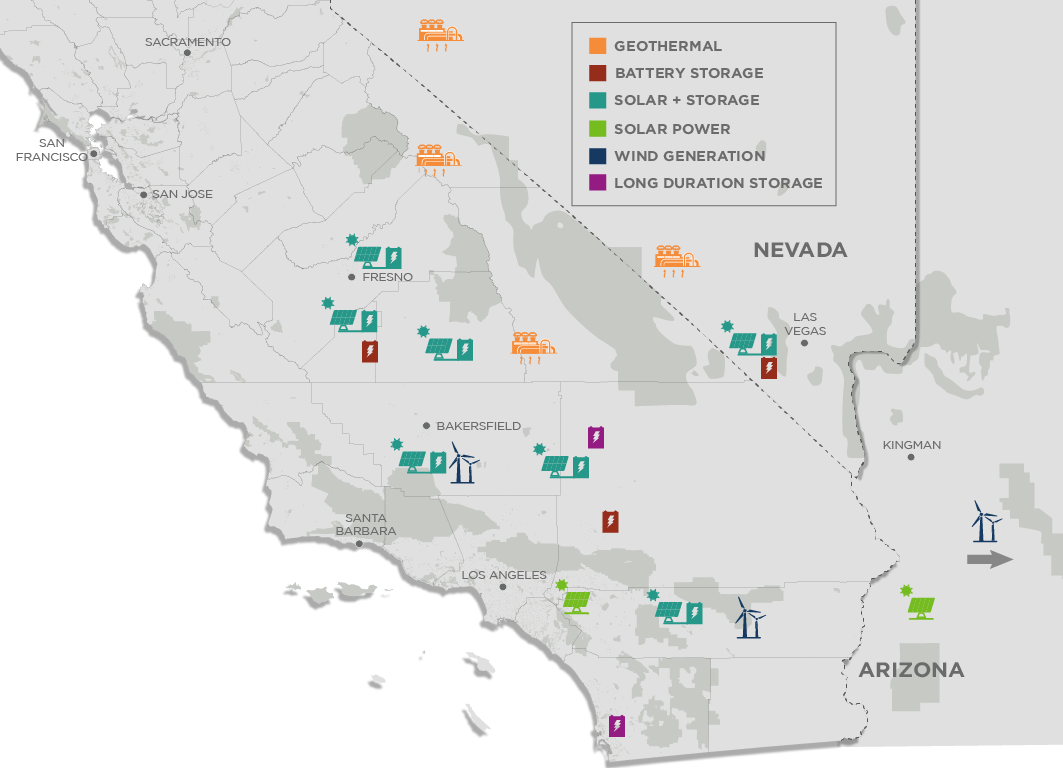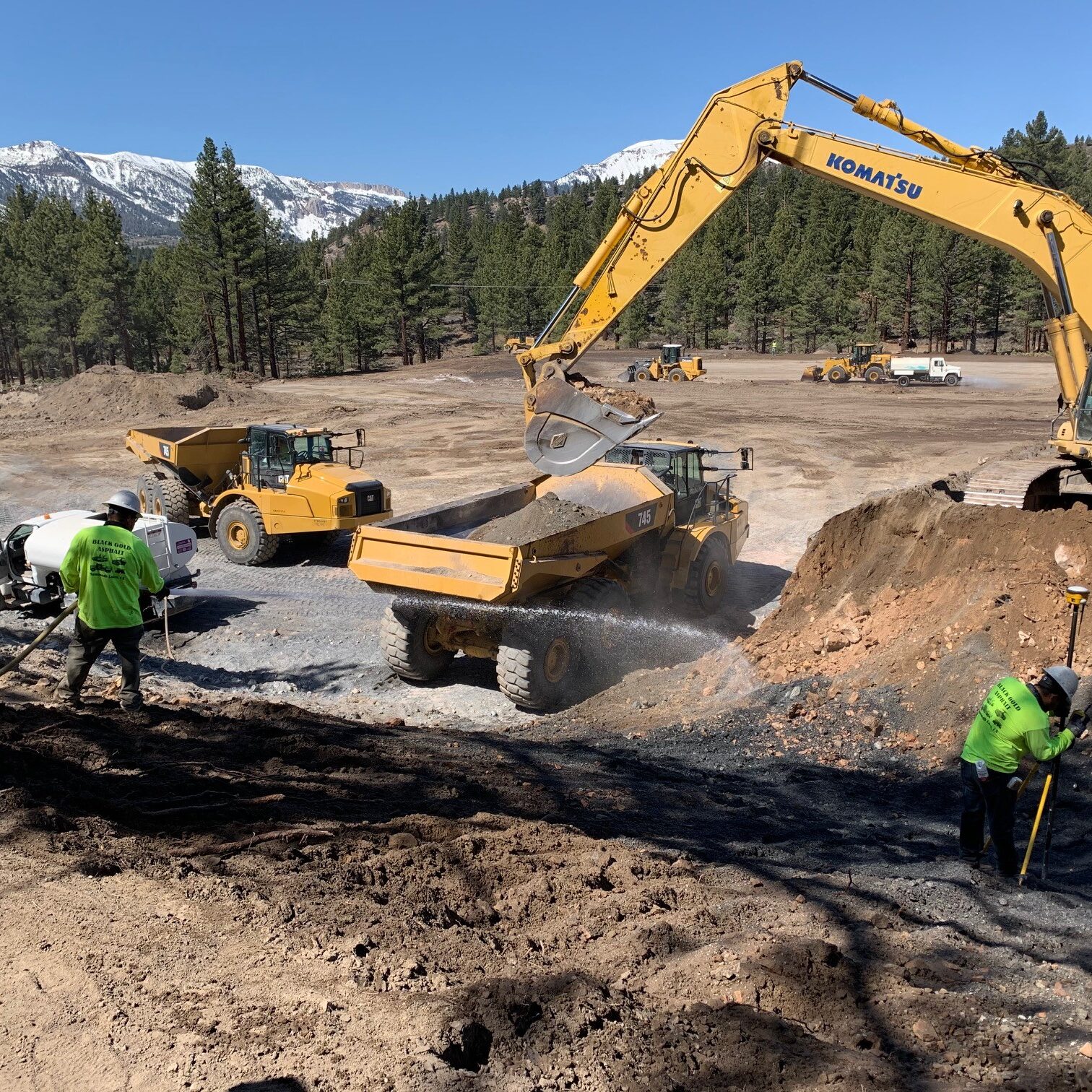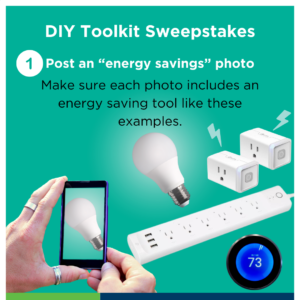$3.7 Billion Invested in Renewable Projects
We are advancing the clean energy movement by investing in renewable wind, solar+storage and geothermal projects.
Explore where your energy comes from
Silicon Valley Clean Energy (SVCE) has renewable energy projects throughout California and nearby states that connect to our electric grid. These projects help the community deliver on its commitment to clean energy that brings jobs and economic benefits to the state.
Some helpful renewable energy definitions:
Geothermal: generated by heat underneath the earth’s surface
Solar Power: uses the energy from the sun to produce electricity from photovoltaic cells
Solar Power + Storage: a utility-scale battery system that can store the electricity produced from solar panels and release this electricity when the sun isn’t shining
Wind Generation: wind turbines harness the power of the wind to produce electricity
Long-duration Storage: any system that is able to store energy and release energy at a constant output for at least 8 hours – this helps ensure that there is adequate electricity available at times when it is needed the most
Reaching California’s Clean Energy Goals
California has set strong clean energy goals – including a goal for all electricity to be generated by carbon–free and renewable sources by 2045. info
SVCE is ahead of this target, with about half of our base energy supply coming from renewable resources and more new renewable projects are coming soon to help meet our long-term goals. Many of these new renewable projects will also support the state’s goal to build new clean resources by 2026.
Another piece of the puzzle – energy storage. SVCE has surpassed California’s energy storage targets for all electricity providers by committing to more than 100 MW of utility-scale energy storage. In addition, SVCE continues to support customers in adding home battery storage paired with rooftop solar.
Power Content & Integrated Resources Plan
SV Clean Energy 2022 Power Mix (Residential)
SV Clean Energy 2022 Power Mix (Commercial)
| Residential Power Mix – 中文 Commercial Power Mix – 中文 |
Residential Power Mix – Español Commercial Power Mix – Español |
Residential Power Mix – Tiếng Việt Commercial Power Mix – Tiếng Việt |
The Power Content Label is part of the California Energy Commission’s annual reporting requirements. The Energy Commission describes it as:
“You can think of the power content label as a ‘nutrition label’ for electricity. The power content label provides information about the energy resources used to generate electricity that is put into the power grid. Just as a nutrition label provides information about the food you eat, the power content label provides information about your electricity sources.”
Senate Bill 350 (De León, 2015) requires all load-serving entities under the jurisdiction of the California Public Utilities Commission (CPUC), including CCAs, to complete and submit Integrated Resource Plans (IRPs) at regular intervals. IRPs are planning documents designed to assist the CPUC with implementation of statewide energy policy goals, particularly greenhouse gas (GHG) emissions reduction.
The central goal of the IRP is to demonstrate that each load-serving entity is on track to contribute its share of GHG reductions by 2030 in order to help the electricity sector meet its portion of the statewide GHG reduction target. SVCE’s most recent IRP was submitted to the CPUC on November 1, 2022. More information on the IRP process and requirements can be found on the CPUC’s IRP webpage .
- Narrative Report
- Clean System Power Calculators
- Resource Data Templates

